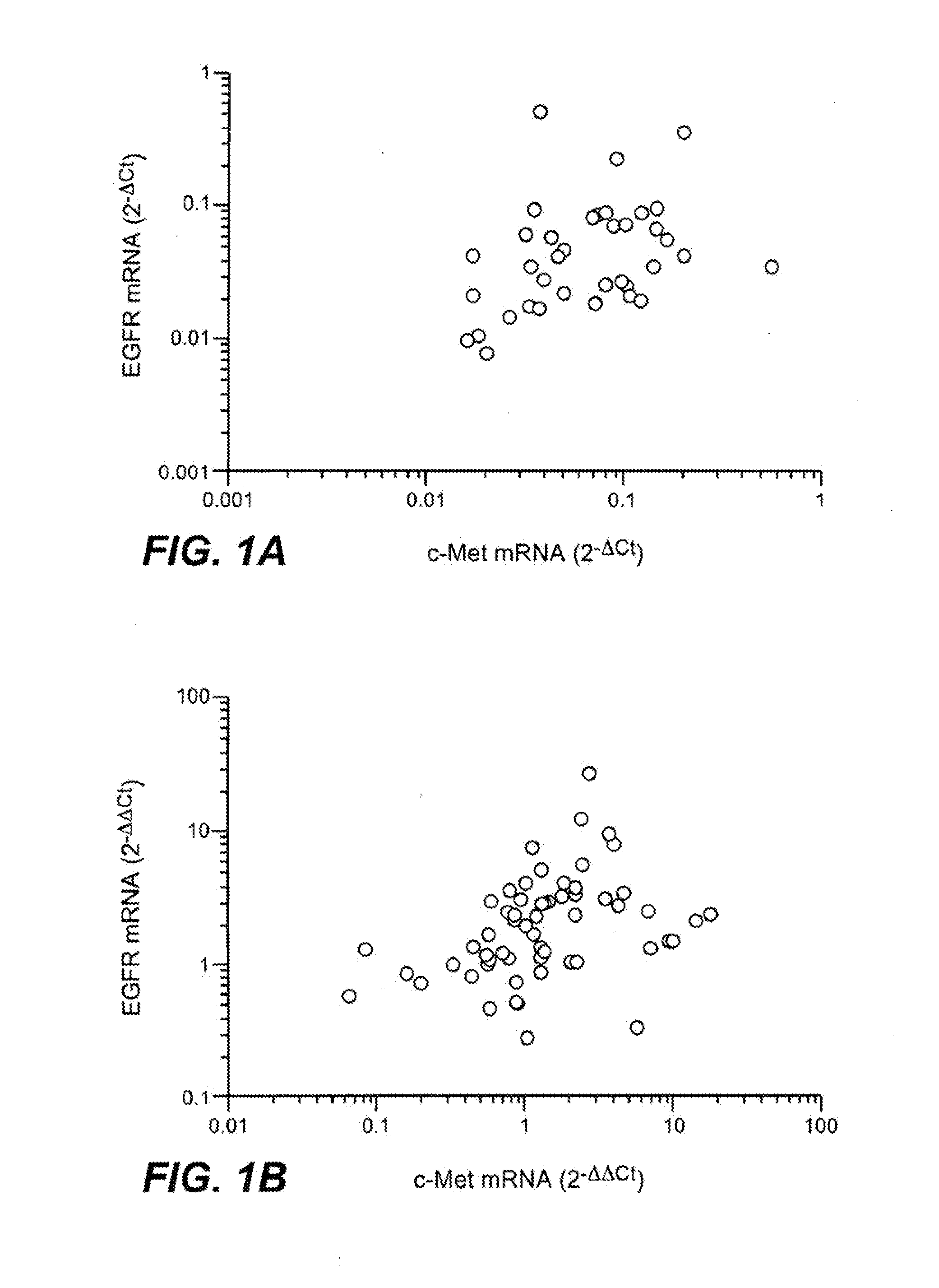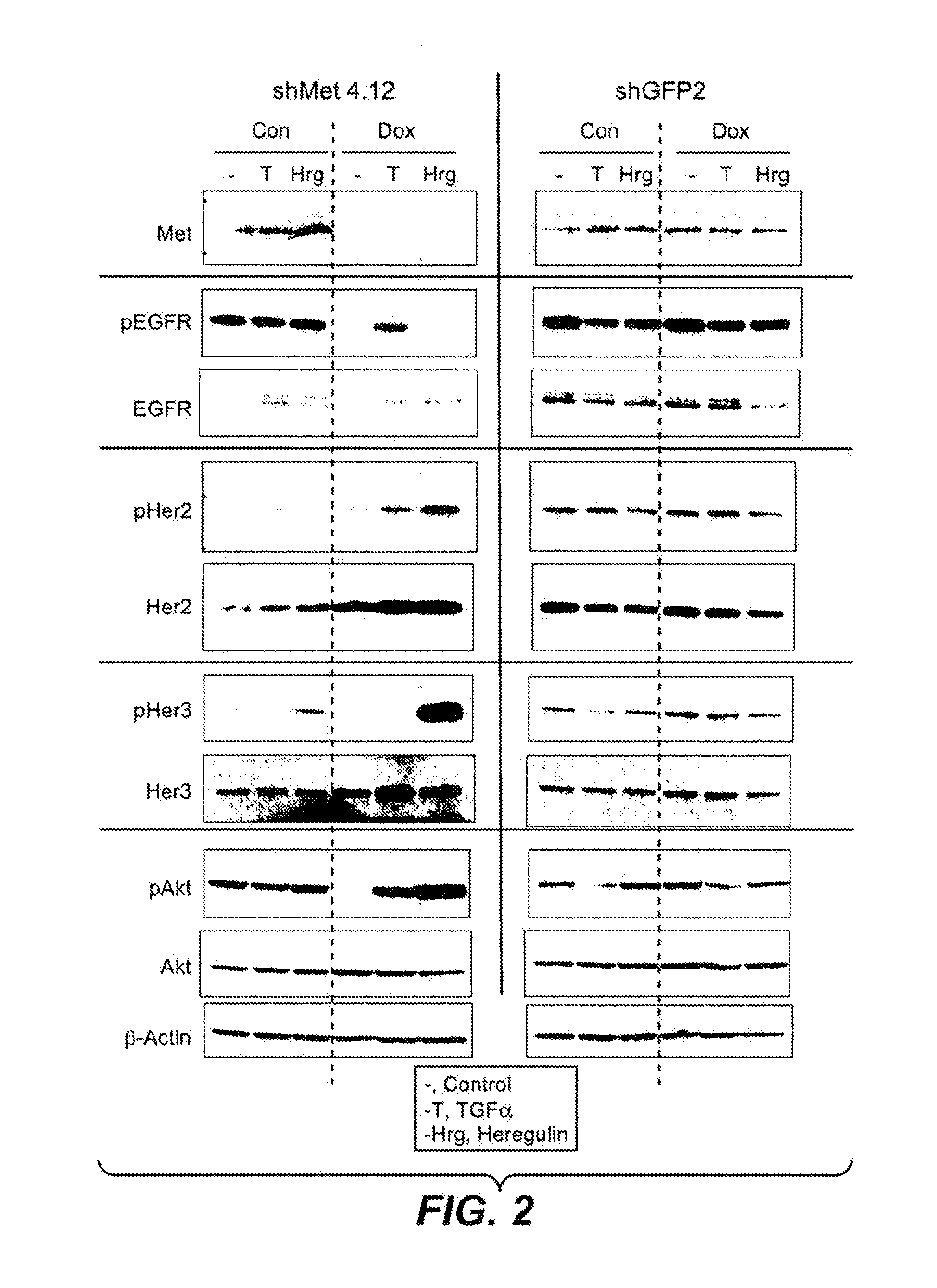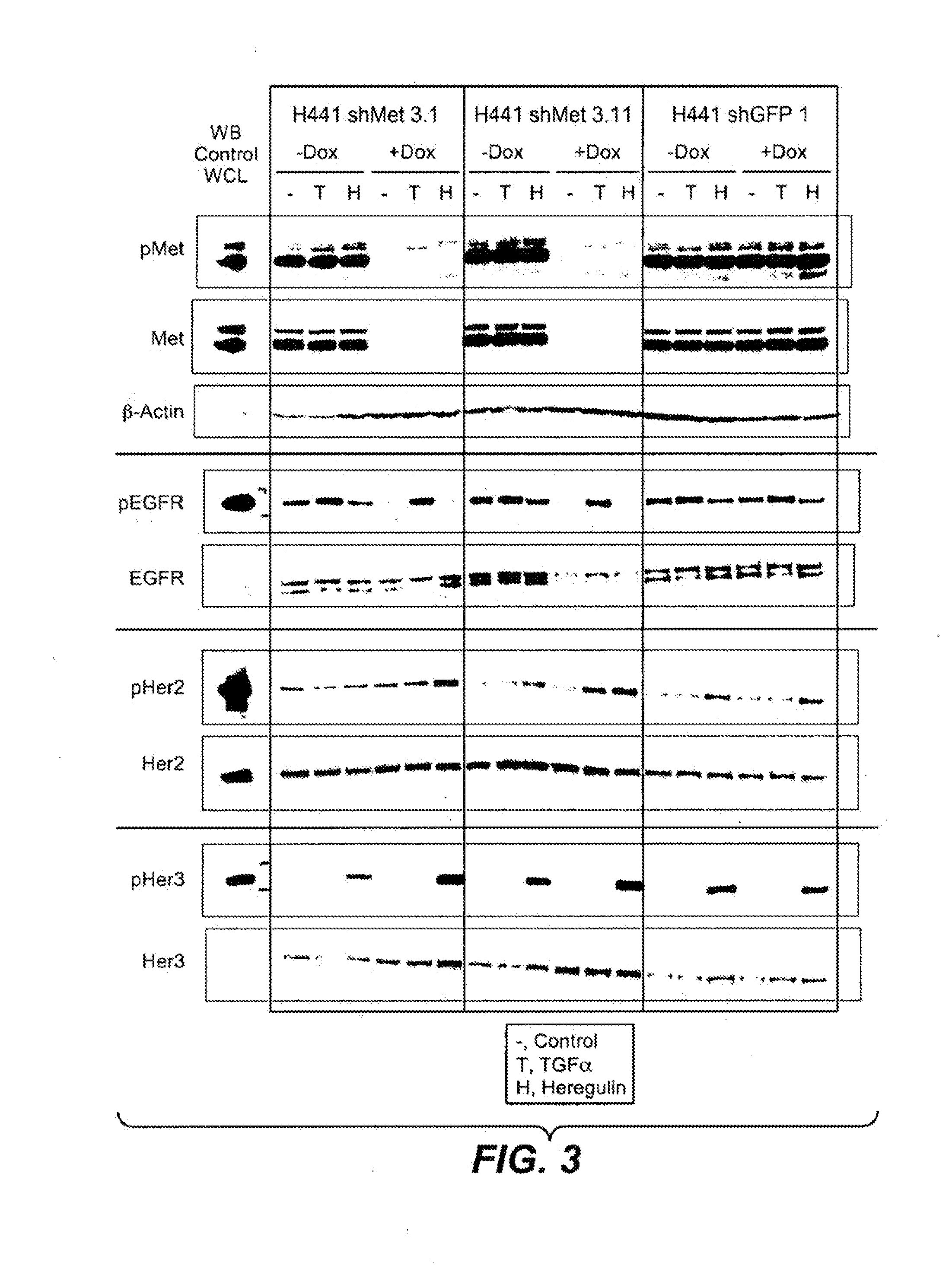Combination therapy with c-met and EGFR antagonists
a technology of c-met and egfr, applied in the field of molecular biology and growth factor regulation, can solve the problems of tumor invasion and metastasis, tumorigenesis and metastasis, semaphorin overexpression, etc., and achieve the effect of significant anti-tumor activity
- Summary
- Abstract
- Description
- Claims
- Application Information
AI Technical Summary
Benefits of technology
Problems solved by technology
Method used
Image
Examples
example 1
Analysis of c-Met and EGFR Expression in NSCLC Cell Lines and Tumor Samples
Materials and Methods
[0405]Microarray Studies.
[0406]Basal gene expression analysis of NSCLC cell lines and primary tumors was carried out using RNA extracted from sub-confluent cell cultures or frozen tumor lysates on the Affymetrix (Santa Clara, Calif.) microarray platform (HGU133Plus—2.0 chips). Preparation of complementary RNA, array hybridizations, and subsequent data analysis were carried out using manufacturer protocols, essentially as described in Hoffman E P et al., Nat Rev Genet 5:229-37 (2004).
[0407]To evaluate correlation of c-met expression with expression of other receptor tyrosine kinases (RTKs) expressed in NSCLC specimens, a variation filter was used to exclude genes with minimal variation across the samples being analyzed. Genes with minimal expression (those for which the absolute variation (max-min) across samples was <1000) were excluded from further analysis. In addition, a single probe w...
example 2
Reduction of c-Met Protein Expression in NSCLC Cells Increases Ligand-Induced Activation of EGFR, Her2 and Her3
[0422]Materials and Methods
[0423]Retroviral shRNA Constructs.
[0424]Oligonucleotides coding shRNA sequences against c-met (5′-GATCCCCGAACAGAATCACTGACATATTCAAGAGATATGTCAGTGATTCTGTTCTTTTTTGGAAA-3′ (SEQ ID NO: 32) (shMet 3) and
[0425]5′GATCCCCGAAACTGTATGCTGGATGATTCAAGAGATCATCCAGCATACAGTTTCTTTTTTGGAAA (SEQ ID NO: 33) (shMet 4)) were cloned into BglII / HindIII sites of the pShuttle-H1 vector downstream of the H1 promoter (David Davis, GNE). BOLD text signifies the target hybridizing sequence. These constructs were recombined with the retroviral pHUSH-GW vector (Gray D et al BMC Biotechnology. 2007; 7:61) using Clonase H enzyme (Invitrogen), generating a construct in which shRNA expression is under control of an inducible promoter. Treatment with the tetracycline analog doxycycline results in shRNA expression. The shGFP2 control retroviral construct containing a shRNA directed again...
example 3
The Combination of c-Met Knockdown and Treatment with EGFR Inhibitor Erlotinib Significantly Inhibited Tumor Growth in a Xenograft Model
[0442]To test whether EGFR plays a role in maintaining tumor survival in cell in which c-met function is partially inhibited, EBC-1 shMet-4.5 tumor bearing animals were treated with combinations of erlotinib (Tarceva™) and Dox.
Materials and Methods
[0443]Test Material.
[0444]Erlotinib (Tarceva™) was provided by OSI Pharmaceuticals to the Formulations Department at Genentech and was weighed out along with a sufficient amount of vehicle (methylcellulose tween (MCT)). Materials were stored in a refrigerator set to maintain a temperature range of 4° C. to 8° C. Anti-c-met monovalent monoclonal antibody MetMAb (rhuOA5D5v2) (WO2007 / 063816) was provided by the Antibody Engineering Department at Genentech, Inc., in a clear liquid form. The EBC-1 cell line was obtained from Japanese Collection of Research Bioresources (JCRB).
[0445]Species.
[0446]Forty nude mice...
PUM
| Property | Measurement | Unit |
|---|---|---|
| concentrations | aaaaa | aaaaa |
| time | aaaaa | aaaaa |
| time | aaaaa | aaaaa |
Abstract
Description
Claims
Application Information
 Login to View More
Login to View More - R&D
- Intellectual Property
- Life Sciences
- Materials
- Tech Scout
- Unparalleled Data Quality
- Higher Quality Content
- 60% Fewer Hallucinations
Browse by: Latest US Patents, China's latest patents, Technical Efficacy Thesaurus, Application Domain, Technology Topic, Popular Technical Reports.
© 2025 PatSnap. All rights reserved.Legal|Privacy policy|Modern Slavery Act Transparency Statement|Sitemap|About US| Contact US: help@patsnap.com



